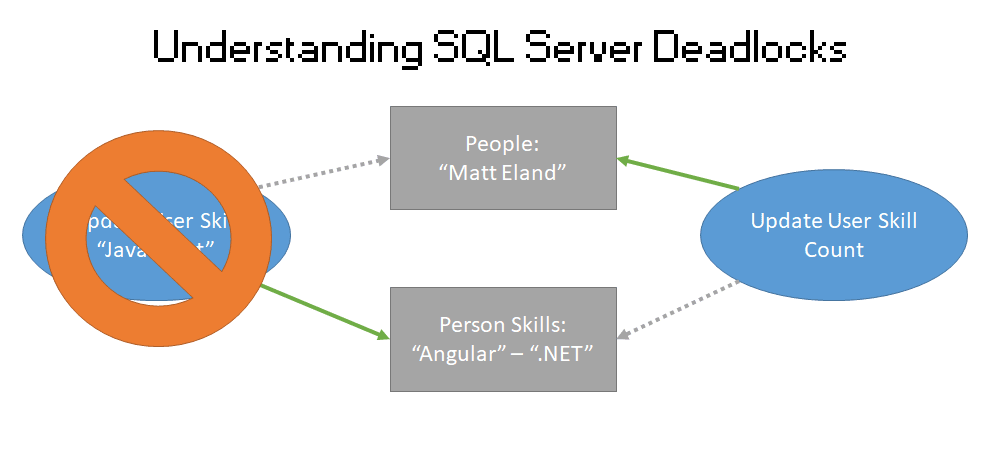
The XML deadlock graph is improved for parallelism deadlock scenarios. This warning is rendered in a showplan xml attribute (). The DMVs sys.dm_exec_query_stats, sys.dm_exec_procedure_stats and sys.dm_exec_trigger_stats now include the data that is spilled by parallelism operators, in the columns total_spills, last_spills, max_spills, and min_spills.Ī showplan warning is reported at run time if there are parallelism spills. Each thread may report an exchange_spill 圎vent multiple times. The exchange_spill 圎vent reports how much data parallelism operators spill per each thread, in the event field name worktable_physical_writes. ) AS recurso ON recurso.resourceProcessOwner = 'varchar(100)') AND recurso.Dt_Evento = A.This SQL Server update improves troubleshooting parallelism-related (exchange) deadlocks by adding the following enhancements: OUTER APPLY ('owner-list/owner') AS owner(dados) LEFT JOIN 'int') AS 'int') AS 'int') AS 'varchar(128)') AS 'varchar(2)') AS 'varchar(128)') AS 'varchar(2)') AS ĬROSS APPLY A.TargetData.nodes('//ridlock') AS recurso(dados) OUTER APPLY dados.event_data.nodes('data/value/deadlock/process-list/process') AS processo(dados) ('(inputbuf/text())') AS ,ĭB_NAME(recurso.resourceDBId) AS 'varchar(100)') AS 'int') AS 'varchar(60)') AS 'varchar(60)') AS 'int') AS 'varchar(256)') AS 'varchar(256)') AS 'varchar(256)') AS 'varchar(256)') AS 'varchar(256)') AS 'varchar(256)')) AS 'int') AS 'varchar(10)') AS ,ĬROSS APPLY A.TargetData.nodes('//event') AS dados(event_data)ĬROSS APPLY dados.event_data.nodes('data/value/deadlock/victim-list/victimProcess') AS vitima(dados) Sys.fn_xe_file_target_read_file(N'C:\Logs\Deadlocks*.xel', NULL, NULL, NULL)ĭATEADD(HOUR, 'datetime2')) AS , IF (OBJECT_ID('tempdb.#xml_deadlock') IS NOT NULL) DROP TABLE #xml_deadlockĭATEADD(HOUR, CAST(timestamp_utc AS DATETIME2)) AS Dt_Evento, DATETIME2 = ISNULL((SELECT MAX(Dt_Log) FROM dbo.Historico_Deadlocks WITH(NOLOCK)), INT = DATEDIFF(HOUR, GETUTCDATE(), GETDATE()) IF (OBJECT_ID('dbo.Historico_Deadlocks') IS NULL) Passo 5 - Vou tentar travar a Tabela (já possui lock na outra sessão) Passo 6 - Ao tentar travar a Tabela 1, irá ocorrer o deadlock If there are still deadlocks in the instance, it will eliminate more sessions and shorten the next execution cycles in 100ms (each cycle) until no deadlock is detected. When the Deadlock Monitor Thread drops a session due to deadlock, it runs again immediately to verify that the deadlock has been resolved. If the sessions have the same priority and the same cost, the victim of the deadlock will be chosen at random. How does SQL Server decide which session it will drop? It is very simple, it will always eliminate the session that has the lowest cost (generally, the one that was “locked” last), thus facilitating the rollback of transactions performed by the session that was chosen to be disconnected (deadlock victim) As long as they have the same priority.
QUERY DEADLOCK SQL SERVER FREE
If it encounters any deadlock, it will kill one of the deadlocked sessions to free the locked resources for the other waiting session. This thread fires every 5 seconds to check for deadlocks on the instance. If you query the sys.dm_os_waiting_tasks DMV, you will notice that there is always a system task with the REQUEST_FOR_DEADLOCK_SEARCH event. In SQL Server there is a feature called Deadlock Monitor Thread, which runs in the background to identify and “help” resolve deadlocks in the instance, thus preventing the sessions from endlessly waiting for each other.


Career, Courses and Certifications (36).


 0 kommentar(er)
0 kommentar(er)
